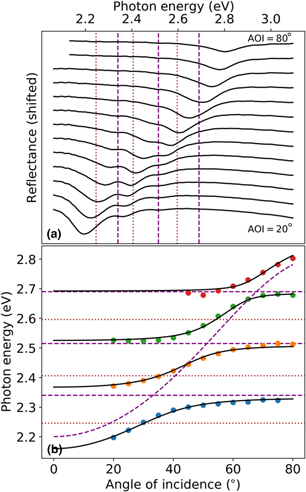Article contents
Strong exciton–photon coupling in anthradithiophene microcavities: from isolated molecules to aggregates
Published online by Cambridge University Press: 05 August 2019
Abstract

The authors report on strong exciton–photon coupling in all-metal microcavities containing functionalized anthradithiophene (ADT) in host poly(methyl methacrylate) matrices for a wide range of ADT concentrations. Angle-resolved reflectance of polycrystalline films revealed Rabi splittings up to 340 meV. Angle-resolved photoluminescence in films with low ADT concentrations (dominated by “isolated” ADT molecules) showed Rabi splittings which scaled with the square root of oscillator strength. When “aggregated” and “isolated” ADT molecules coexisted in film, cavities preferentially coupled to “isolated” molecules due to an anisotropic distribution of aggregates. As a solution-processable high-performance organic semiconductor, ADT shows promise as an (opto)electronic polaritonic material.
- Type
- Research Letters
- Information
- Copyright
- Copyright © The Author(s) 2019
References
- 5
- Cited by




